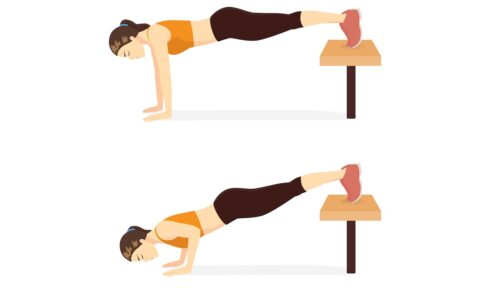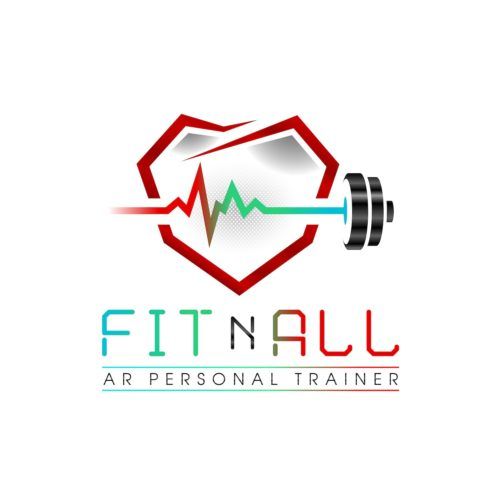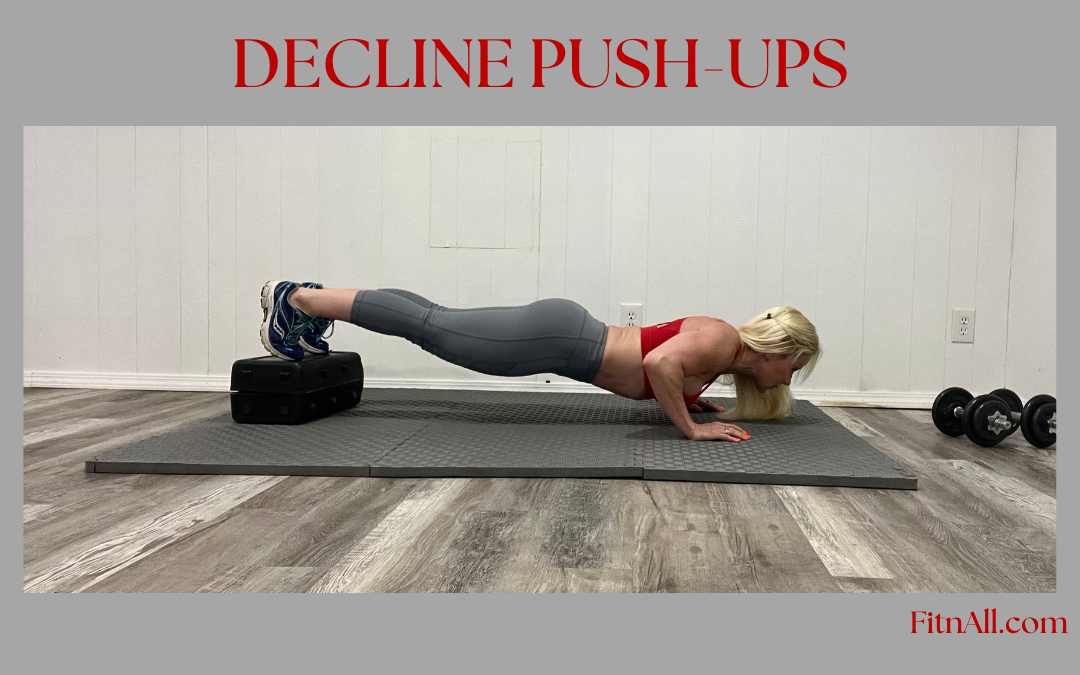The push-up is a powerful functional exercise that strengthens and sculpts your upper body and core. A great variation of the standard push-up is the decline push-up. This variation is a more advanced movement and a little bit more difficult than the standard pushup. The decline push-up involves the same motion but it’s done with your feet on an elevated surface, putting your body at a downward angle. Read on to learn more about decline push-ups – benefits, variations, and proper form.
Benefits of Decline Push-Ups
- Additional Muscles Worked: Besides working all the muscles that the standard push-up targets such as the chest, shoulders, triceps, and core muscles, the decline push-up targets intensely the upper chest.
- Calorie Burner: Being that it’s a compound movement, the decline push-up helps you burn tons of calories.
- Efficiency: The decline push-up works out multiple muscle groups simultaneously, saving you time at the gym.
- Functionality: This is a functional exercise that increases your overall upper-body strength, helping you with your daily activities and other exercises.
- Simplicity: The decline push-up is a pretty simple exercise. You just need your body and a surface higher than the floor. You can use a bench, stepper, box, or chair – You can start with a low surface and increase the height over time.
How to Do Decline Push-Ups

- Kneel down with your back to a bench. Put your hands on the floor, with your hands at shoulder levels and positioned slightly wider than shoulder-width apart. Your elbows should be at 45 degrees.
- Place your feet on top of the bench – parallel to each other, not turning inward or outwardly.
- Your hips, shoulders, and head should be in line. The hips shouldn’t drop down toward the floor or be elevated.
- Before getting started, squeeze your glutes and engage your core – bring your belly button toward your spine and keep your abdominals tight.
- Inhale as you slowly bend your elbows and lower your chest to the floor, keeping your back and neck aligned.
- Exhale as you contract your chest muscles and push your body up through your hands to the starting position without locking your elbows.
- Keep your core tight throughout the entire movement and your body in a straight line from head to toe.
- Perform the desired number of repetitions based on your goals, strength, and ability.
? Avoid push-ups if you have shoulder, wrist, or elbow injuries. Get clearance before performing this exercise.
? If you feel sharp pain or hear clicking in your shoulders, wrists, or elbows during the push-up, stop.
Identify the common mistakes associated with the push-up, so you can avoid them. Learn more: Push-Ups: Benefits, Mistakes, Form, Muscles Worked, Videos
Variations
You can make this exercise more challenging by doing the following:
- Use higher surfaces: The push-up gets harder as the surface gets higher. You can even put them on a wall to do an advanced wall pushup.
- Increase the resistance: Wear a weighted belt or vest to make you heavier. This increases the amount of weight you have to lift.
- One-leg pushups: Instead of keeping both feet on the elevated surface, you keep one leg in the air while doing decline pushups. Be mindful to switch legs so you don’t create imbalances.
- One-arm pushups: Instead of having both hands on the floor, you place one arm behind your back.
Decline Push-Up Video Tutorial
As you can see the decline push-up has numerous advantages for your body. Being that versatile, you can change it up and practice different variations to make it more challenging. Start doing those decline push-ups with proper form so you experience changes in your physique and athleticism.
Whether you want to lose weight, tone your body, gain muscle, or get stronger, all muscles must be trained.
Lift, Burn more Fat, Get Stronger, and Live Healthier!
To a Fitter Healthier You,
The Fitness Wellness Mentor



